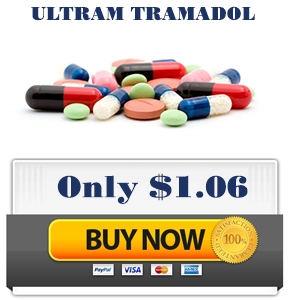Tramadol is a central analgesic. It has a mixed mechanism of action. It is a nonselective agonist of opioid mu-, delta- and kappa- receptors. Other mechanisms involved in providing the analgesic effect of Tramadol hydrochloride are inhibition of norepinephrine reuptake in neurons and enhancement of serotonergic response.
Indications
Acute and chronic pain syndrome of moderate and significant severity (pre-and postoperative periods, malignancies, injuries, neuralgia) as well as carrying out painful diagnostic and therapeutic manipulations.
Application
The dose and duration of treatment are set by the doctor individually, based on the intensity of the pain syndrome.
Adults and children aged 14 years appoint inside (with a small amount of liquid regardless of food intake) 1 capsule (50 mg). In severe pain, a single dose can be 2 capsules (100 mg).
The daily dose should not exceed 8 capsules (400 mg).
The drug cannot be used longer than the period justified from a therapeutic point of view. For the patients with moderate impairment of liver/kidney function, as well as the elderly, the dose is selected individually.
With moderate liver failure, it is recommended to reduce the dose or increase the interval between doses.
Contraindications
Hypersensitivity to the active substance or other components of the drug. Acute alcohol intoxication, acute poisoning with sleeping pills, analgesic or psychotropic drugs, severe liver failure, severe renal failure, epilepsy with frequent attacks. Not used to treat opioid addiction. The period of pregnancy or breastfeeding. Children under 14 years.
Side effect
Increased sweating, headache, dizziness, weakness, confusion, anxiety may occur. There are also nausea, vomiting, dry mouth, changes in appetite, constipation, flatulence. On the part of the cardiovascular system, tachycardia, a feeling of palpitation, a decrease in blood pressure can be felt.
Occasionally Tramadol can cause drug dependence in patients prone to drug abuse, as well as with long-term use of high doses of the drug.
Abrupt withdrawal after prolonged use of the drug can cause withdrawal syndrome (manifestations similar to withdrawal symptoms of narcotic drugs: psychomotor agitation, anxiety, irritability, insomnia, tremor, paraesthesia, phobia attacks, hallucinations, confusion, depersonalization, paranoia, tinnitus, disorders of the digestive system).
Special instruction
During treatment, Tramadol should not be combined with alcohol. With long-term use, addiction and drug dependence can develop. It should not be used for the treatment of withdrawal syndrome of narcotic substances.
Special caution should be exercised when prescribing the drug to patients with head injuries, increased intracranial pressure, moderate impairment of kidney or liver function, patients with a tendency to seizures, as well as patients with increased sensitivity to opiates. The risk of seizures may be higher in patients who are used to taking Tramadol to reduce convulsive syndrome. Patients with a history of epilepsy and a tendency to epileptic seizures can be prescribed the drug only if necessary. Caution is used to treat patients with impaired respiratory function or in the case of simultaneous use of drugs that inhibit the activity of the central nervous system, because of the risk of further respiratory depression.

